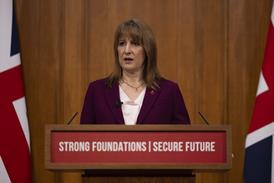Defined benefit (DB) pension schemes continue to experience strong funding levels, new data shows, as the government is considering new rules to allow some surplus capital to be released.

As of the end of the third quarter of 2025, XPS Group estimated that DB schemes had an aggregate surplus of £222bn against their long-term funding targets, a rise of £48bn in 12 months.
Total assets were estimated at £1,157bn compared to £934bn of liabilities at the end of September, according to XPS Group’s DB funding tracker.
On a buyout basis, which assesses a scheme’s ability to secure a bulk annuity, the total surplus reached an estimated £120bn – up from £39bn a year earlier.
Jill Fletcher, a senior consultant at XPS Group, said: “Many schemes are now well hedged against changes in gilt yields, which should provide stability as markets evolve. For trustees and sponsors, these surplus levels create new strategic options but also demand careful planning.”
Other measures of DB scheme funding paint a similar picture. Broadstone’s latest Sirius Index shows that September marked the fifth consecutive month of funding improvements, as asset growth outpaced rising liabilities.
The funding level of a sample fully hedged scheme rose from 71.1% at the end of August to 71.6% at the end of September, Broadstone reported, with the funding level improving and total deficit declining month on month from the end of April.
“Upcoming trustee meetings and the forthcoming Budget are a good time to check funding progress and look for opportunities to increase resilience.”
Chris Rice, Broadstone
Despite a slight rise in gilt yields, Broadstone’s 50% hedged scheme model also showed an increased funding level, going from 109% at the end of August to 109.7% at the end of September.
Chris Rice, head of trustee services at Broadstone, said: “There continues to be economic and political uncertainty, and while schemes have weathered this well year to date, upcoming trustee meetings and the forthcoming Budget are a good time to check funding progress and look for opportunities to increase resilience.”
Meanwhile, analysis of DB schemes attached to FTSE 100-listed companies by LCP has found a combined surplus of £55bn on an IAS19 accounting basis, with a total funding level of approximately 120%.

Jonathan Griffith, partner and head of endgame innovation at LCP, said such “robust” funding levels meant that “the conversation has firmly shifted from funding to future-proofing and delivering value”.
“It’s likely we’ll see further developments in the endgame solution space, offering sponsors and trustees more choice and ability to optimise their strategy,” he added.
However, behind this aggregate funding figure, funding levels for individual schemes vary. LCP said funding ratios ranged from around 90% to more than 150%. The consultancy said this underlined the need for trustee boards to consider an endgame strategy that is right for their specific circumstances and objectives, rather than following any ‘one size fits all’ solution.
LCP also said trustee conversations were evolving from short-term recovery planning to considering how surpluses can actively support corporate and member outcomes, for example through benefit improvements, covenant strengthening, or top-ups for current staff saving into defined contribution plans.






















